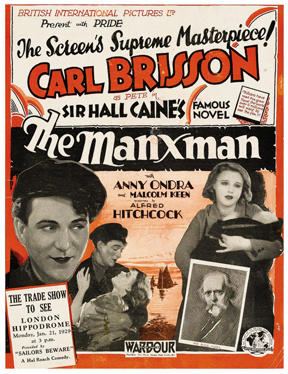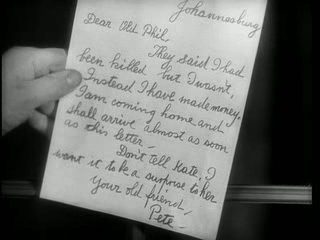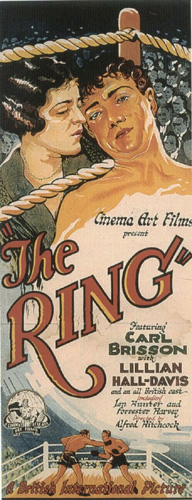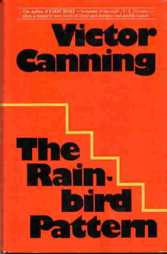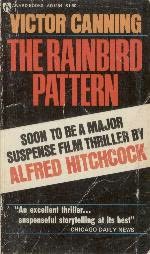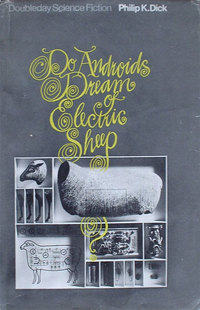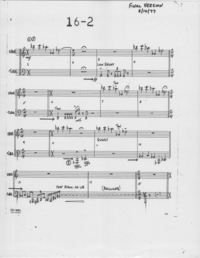In one post because I watched these back-to-back while in Germany. Wrote this there, too.
If you can find a thematic link, please submit it.
Apocalypse Now Redux (1979, rev. 2000)
directed by Francis Ford Coppola
screenplay by John Milius and Francis Ford Coppola
narration written by Michael Herr
I’m annoyed with Francis Ford Coppola for making me refer to his movie as Apocalypse Now Redux, instead of letting me just call it Apocalypse Now (1979) and specify that I watched the restored and extended version he made in 2000. No, this movie’s credits clearly state that it has the idiotic title Apocalypse Now Redux, that it is copyright 2000, and that “Portions of this motion picture were originally released in 1979 in the United States and Canada by United Artists as ‘Apocalypse Now’.” Portions constituting the whole movie. It would be less absurd if this new movie were in some substantive way different (rather than just longer), such that it could not be construed as supplanting the original. But it can and it does and it isn’t, so it should just have the same title and say “extended edition” or something on the DVD package and leave imdb alone! Actually, it looks like imdb has handled this correctly in spite of Mr. Coppola’s nonsense.
So I don’t know about Apocalypse Now because I’ve never seen it, but Apocalypse Now Redux is kind of a mess. Looks beautiful, full of interesting things, but sort of a mess and it really falls apart at the end. I know he had trouble with Marlon Brando and had to make do, but it shows and I’m calling it like it is. The best sequence is the part with Robert Duvall near the beginning. Martin Sheen does a good job holding things together in a movie that doesn’t know how realistic it wants to be. If your movie is going to pass between realism and dream-cinema, the pacing and sequencing of those changes need to be carefully planned; here they seemed to happen willy-nilly, when it was convenient.
Scenes with women quickly become dreamy and lead to nudity; this happens at a key moment in The Conversation too and seemed unmotivated in both places. Sex is a magical dream-state and women are the key? Is that really the point? I understand that here, as with Gene Hackman, the thematic idea is that safety and intimacy have become tragically unattainable for these guys and that anything like it is a mirage, but why can’t that be presented soberly? There’s something film-school phony about the justification for showing boobs. And anyway, Miss December was flown to a nearly-abandoned base in Vietnam and prostituted herself to the troops in a vapid daze? That doesn’t make any sense.
But fine, a lot of things in the movie didn’t make real-world sense; it was mostly buildup and omens and horror. And somewhere toward the end it dropped the line of tension, and by the time Martin Sheen is in Brando’s presence and narrating, “This was truly the heart of the jungle” or whatever, the horror of which the man speaks has slipped out of the movie. It’s quite possible that in the shorter, original version of the movie that everyone prefers, this isn’t the case. The colors on this Redux look lovely though.
Music, credited to the director and his father, music producer David Rubinson, and a whole lot of musicians, is actually quite good, and carries big chunks of the movie on its back. The “love scene” at the plantation is a glaringly misscored exception – again, the man has some nerdy ideas about love scenes.
I didn’t watch this on the subway but I did watch it on my iPod. Watching a movie on the iPod is less likely to suck me in to a self-forgetting state of complete escape than watching it at home or in the theater – obviously – and previously I would have thought that was a loss. And I suppose it is a loss; but there is a compensatory gain. Watching a movie without forgetting myself means watching it more intelligently; I feel better able to track the plot, the craft, and the aesthetics all at once. This appreciation might be a bit colder but it is clearer and more complete; I feel like I’m getting directly to the way I’d feel on a second or third viewing. A movie watched on this screen is less of an experience to which I submit, more of a cultural object that I can willingly consume and digest. This is the way people talk about movies and the way I am thinking about movies when I make a Netflix queue or take recommendations or browse a “100 best” list. But the enveloping experience has its place too.
Yes, maybe this movie would have worked better that way, surrounding me beyond thought. But I think it’s fair to say that if a movie holds up only when it goes undigested, it is inferior to a movie that can do both. So maybe I missed out on some of the potential savor of this experience, but my opinion is probably the same one I would have arrived at afterward. And I don’t have time to savor everything there is, so fine.
This did make me want to reread Heart of Darkness. This was Movie You Must See Before You Die #653.
Finding Nemo (2003)
directed by Andrew Stanton
co-directed by Lee Unkrich
screenplay by Andrew Stanton, Bob Peterson, and David Reynolds
on a story by Andrew Stanton
Again, on the iPod. I think Pixar reads just fine on a little screen. On the other hand it’s all about textural gratification and maybe I would have gotten some more of that if I’d been really surrounded by those fish and bubbles. But I think I got plenty.
Have I seen all the Pixar movies now? I think not but I can’t figure out which other ones I’m missing. Except for Cars – I know I haven’t seen that. Maybe on the flight home from this trip I’m on I’ll pick that one up. [ed: didn’t.]
Just checked the list online and that is in fact the only one I have left. [ed: but now, by the time I’m posting this, I also have WALL-E to contend with]
People love this movie but I thought it was flimsy. The script seemed like the script for an attraction at Disneyworld, not for an actual movie. The scenes of learning and growing were insufficiently essential to the plot and felt phony; the tone for these scenes is determined by formula far more than the actual moral content. I already knew that Finding Nemo was about fish and bubbles, but what is it about thematically? It took most of the movie before they had to fill out that box: it’s about facing fears and letting go of growing children. And for Ellen DeGeneres it’s about, um, not forgetting. Or… making friends. Or about refusing to accept that you are just a comic relief character, in a movie where every secondary character is just a comic relief character. It’s about struggling bravely against your crippling comic relief characteristics. “Only when I’m around you, protagonist,” she pretty much says, “do I feel whole. And I don’t want to lose that.”
The movie is an episodic quest with no particular sense of gathering urgency or beckoning mystery. It’s just a series of episodes strung in a row. These are intercut with scenes of of Nemo in a fishtank that don’t go anywhere. Is there some other lesson to be learned in these scenes, about some different facet of facing fears and growing up or something? Did they think there was? Not sure. But they don’t go anywhere.
Beth is saying that she thought the fishtank scenes were a vain attempt to create suspense. Like cutting to Dorothy and an hourglass running out. But if so, they loused it up by piling on the color characters and whimsy until those sequences didn’t feel the least bit dangerous. Their color character machine was on overdrive in this movie. It’s all well and good to draw up a character design sheet, to cast someone famous, and to come up with a delightful distinguishing quirk. Pixar can do that over and over and over and not break a sweat. The real question is whether the movie needs those characters. I felt like this movie was just shoveling from their pile of pre-production concepts onto my head in big heaps. Here are Nemo’s three friends at school and each of their personalities and here are each of their parents and their personalities and here’s his teacher and his personality and here’s the seven inhabitants of the tank and each of their personalities and here are the three sharks and their personalities and WAIT WAIT, we also have this great turtle character that he meets, here’s his personality, and then there’s a baby turtle, here’s his personality, and WAIT WAIT this is our design for the pelican, here’s his personality, and these are his friends, and these are the seagulls….
AAGH! ENOUGH! And yet with all that, I felt like our principal leads were under-developed. They too were just “personalities” like everyone else. The father – the lead – needed to have a little more going on than “he’s an over-protective father – and he’s played by Albert Brooks!” and Ellen DeGeneres definitely needed more than “she’s Exasperating Comic Sidekick – and she’s Ellen!” The world-doodling machinery that drives these movies – Character Development by this team, Story Development by that team – is not always in the best interest of storytelling. I felt like this whole movie wasn’t in the best interest of storytelling.
The jokes were forced too.
So that all said; it was cute. It was inoffensive and basically pleasant to look at and probably fun for kids – little kids. But I got a fair bit more than that out of Toy Story and thought it was fair to hope for it here.
